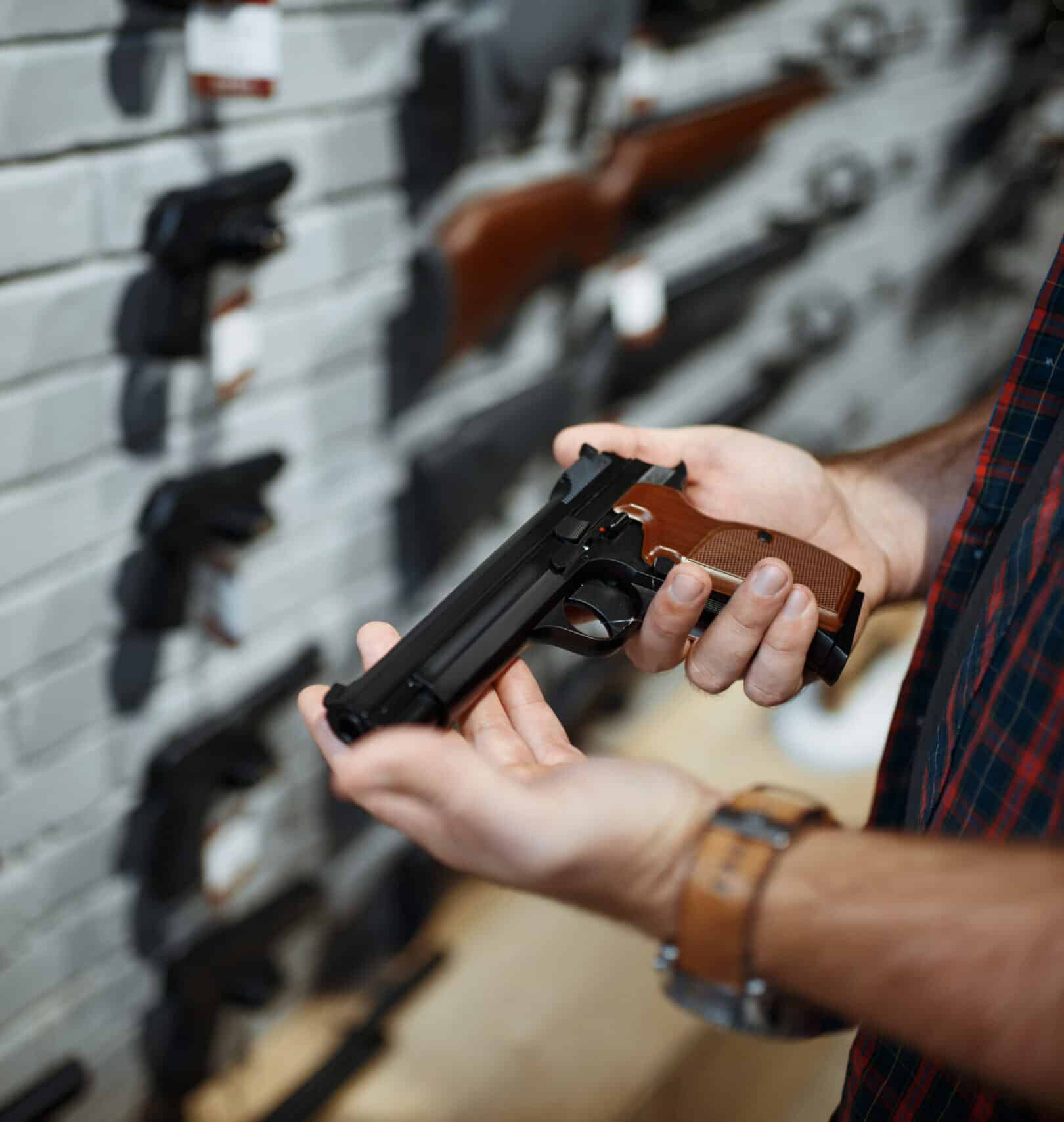Transferring a firearm to a family member may seem simple, but it’s a process governed by both federal and state laws. Whether the transfer is a gift, inheritance, or part of estate planning, failing to follow the correct legal steps can result in serious consequences. These include criminal liability, fines, and the permanent loss of your right to possess firearms. Understanding the regulations around family transfers is essential for lawful and responsible gun ownership. In many cases, the laws vary depending on the recipient’s location, your relationship, and the type of firearm being transferred. This guide outlines everything you need to know to legally transfer gun ownership to a family member—safely and within the law.
Why Gun Transfers to Family Members Are Heavily Regulated
Firearm transfers are subject to strict legal oversight to prevent weapons from ending up in the wrong hands. Although family relationships may provide trust and context, the law does not assume safety based on personal ties alone. Federal law prohibits transferring firearms to individuals who are barred from possession, such as convicted felons or those with domestic violence restraining orders. Many states impose additional restrictions, requiring background checks or paperwork, even between family members. These safeguards aim to reduce unauthorized access, track ownership, and limit gun trafficking through informal transfers. Ignoring the law—even with good intentions—can result in legal penalties for both parties.
Understanding What an FFL License Is and When It’s Required
An FFL, or Federal Firearms License, is issued by the Bureau of Alcohol, Tobacco, Firearms and Explosives (ATF) and authorizes the license holder to legally engage in firearm sales, manufacturing, and transfers[1]. For most family-to-family gun transfers within the same state, an FFL may not be required, depending on local law. However, when firearms are moved across state lines, federal law mandates that the transaction must go through an FFL. This ensures that the recipient completes a background check and the transfer is properly documented. There are multiple FFL types, each intended for different purposes, from collectors to commercial dealers. Understanding what is an FFL license is critical to ensuring your transfer is compliant, especially in scenarios involving inheritance, out-of-state gifting, or high-value firearms.
Intrastate Gifts to Eligible Family Members
In many states, you may legally gift a firearm to a family member who resides in the same state and is not prohibited from possessing a gun. No FFL or background check is required in these instances, though it’s still wise to document the transfer for your records.
Inheritance Through a Will or Estate
Firearms passed through inheritance are usually exempt from FFL requirements under federal law, though the recipient must still be legally eligible to own a gun. State laws may require notification or documentation through probate court.
Temporary Transfers for Immediate Use
Some jurisdictions allow temporary possession of firearms by family members without requiring a full transfer process. This may apply to loaning a firearm for hunting, training, or home protection.
Transfers Between Spouses or Domestic Partners
Several states allow transfers between spouses or partners without involving an FFL, particularly if both live in the same household. However, the recipient must still meet all federal eligibility requirements to possess a firearm.
How Firearm License Types Can Affect the Transfer Process
Different states categorize firearms licenses differently, and these classifications can directly impact how family gun transfers are handled. Some states issue multiple firearms licenses based on purpose, such as concealed carry, purchase, or dealer licenses. If the recipient does not hold the appropriate license or permit, the transfer may be delayed or require additional documentation. In states with mandatory registration or ownership cards, both the giver and receiver may need to appear in person to process the transfer legally[2]. Understanding the licensing framework in your state is essential before initiating a firearm handoff. Failing to comply with licensing laws could result in the revocation of both your license and your right to legally possess a gun.
The Role of Secure Merchant Services in Firearm Transfers That Involve Payment
While many family gun transfers are considered gifts, others involve compensation or sale-like conditions. In these situations, it’s essential to use secure merchant services that are legally authorized to process firearm-related payments. Peer-to-peer apps like PayPal, Venmo, or Cash App often ban firearm transactions and can freeze funds if they detect activity tied to weapon sales. Specialized firearm payment processors ensure compliance with both payment processing rules and federal regulations, reducing the risk of financial account disruption[3]. Using the right payment partner adds a layer of documentation and transparency that benefits both the sender and receiver. Whether the exchange is symbolic or financial, proper payment handling is part of a responsible firearm transfer.

Steps to Legally Transfer Gun Ownership to a Family Member
Verify Eligibility of the Recipient
The first step is confirming that the recipient is not prohibited from owning a firearm under federal or state law. This includes reviewing criminal history, age requirements, and any restraining orders or mental health disqualifications.
Understand State and Federal Transfer Requirements
Research whether the transfer requires a background check, documentation, or registration based on your state’s laws. In some cases, you may be legally obligated to complete the transfer through an FFL even if the recipient is a family member.
Document the Transfer with a Bill of Sale or Record
Even if not required, a written record of the transfer helps establish when ownership was transferred. Include firearm serial numbers, transfer dates, and signatures of both parties.
Use an FFL When Crossing State Lines
If your family member lives in another state, federal law mandates that the firearm be shipped to an FFL in the recipient’s state. The recipient must complete the required forms and pass a background check.
Confirm the Type of Firearm Can Be Legally Owned
Some states ban or restrict ownership of certain types of firearms, such as assault weapons or handguns with specific features. Ensure the recipient’s location allows them to legally possess the specific firearm being transferred.
Transport and Store the Firearm Safely
Ensure the firearm is unloaded, locked, and transported in compliance with federal transportation guidelines. Safe storage after the transfer reduces the risk of theft, misuse, or accidental discharge.
Common Legal Mistakes in Family Gun Transfers
Assuming All Family Transfers Are Exempt
Many people believe giving a firearm to a spouse or child is always legal without paperwork. However, state and federal laws still apply and can require background checks or FFL involvement.
Neglecting to Record the Transfer
Failing to keep documentation of the firearm handoff can leave the original owner legally exposed if the weapon is later used in a crime. A simple written transfer record can protect both parties.
Crossing State Lines Without Using an FFL
Federal law prohibits transferring firearms across state lines without using a licensed dealer. Attempting to bypass this rule can result in felony charges.
Giving a Gun to a Prohibited Person
If the recipient is not legally allowed to possess a firearm, the person transferring it may be held liable, even if they were unaware of the disqualification. Always verify the recipient’s eligibility before proceeding.
Using Banned Payment Methods for Firearm Transactions
Using unauthorized platforms to exchange money for firearms can lead to frozen accounts or processor bans. Always use a compliant merchant service when money is involved.
Overlooking Minor Age Restrictions
Even if federal law permits a transfer, state laws may have stricter age requirements. Some states limit transfers of handguns to individuals under 21, even in family settings.
Why Legal Transfers Protect Everyone Involved
A properly executed transfer safeguards not only your legal standing but also your family member’s ability to own and use the firearm without issue. Documentation, eligibility checks, and proper channels reduce the risk of accidents, misunderstandings, or criminal liability[4]. Transferring a firearm is more than a formality—it’s a legal act that transfers responsibility along with the weapon. Following the right steps communicates respect for the law and reinforces your role as a responsible gun owner. Legal compliance also ensures that the firearm remains traceable and accounted for in the event of theft or misuse. Ultimately, the legal path is the safest and most ethical way to share firearms within your family.
Conclusion
Knowing how to transfer gun ownership to family legally is a vital part of responsible gun ownership. While it may feel informal to gift a firearm to a loved one, laws at both the state and federal levels treat these transactions as formal transfers[5]. Whether you’re dealing with FFL types, firearms licenses, or cross-border considerations, the key is understanding the legal landscape before you act. Legal documentation, eligibility checks, and safe storage practices all play a role in a successful transfer. At Payment Nerds, we support compliant, secure payment and transaction solutions that help firearms owners and dealers operate within legal boundaries. With the right knowledge and tools, you can transfer firearms safely and responsibly—protecting your rights and those of your family members.
Sources
- ATF. “Federal Firearms License (FFL) Overview.” Accessed April 2025.
- NRA Institute for Legislative Action. “State Gun Laws.” Accessed April 2025.
- Giffords Law Center. “Laws Regulating Firearm Transfers.” Accessed April 2025.
- Cornell Law School Legal Information Institute. “18 U.S. Code Chapter 44 – Firearms.” Accessed April 2025.
- National Shooting Sports Foundation. “Understanding Firearm Transfer Requirements.” Accessed April 2025.











